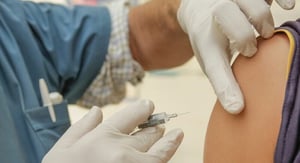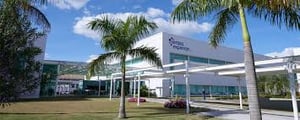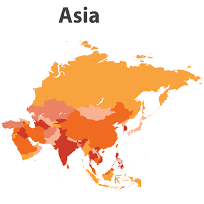NEXT plc (LON:NXT) has today announced its latest Trading Statement.
OVERVIEW
At a time of unprecedented uncertainty, we are using this trading statement to give shareholders a comprehensive, and much longer than normal, update on our trading and operational environment. We include a revised stress test of the Company’s sales, costs, cash flows and finances for the current year. The headlines are as follows:
| Sales | The fall off in sales to date has been faster and steeper than anticipated in our March stress test and we are now modelling lower sales for both the first and second half of the year. |
| Costs | We believe that we can achieve higher cost savings and stock cancellations than we originally anticipated. |
| Cash | We have increased the Company’s cash resources through asset sales, and through suspending share buybacks and dividends. |
| Facilities | We have taken further steps to secure our debt finances by agreeing with our banks to waive the financial covenants in our Revolving Credit Facility (RCF) for the coming year. We have also secured additional borrowing facilities through the Government’s Covid Corporate Financing Facility (CCFF) though, at this time, we think it is unlikely that we will need to draw on these additional funds. |
The conclusion is that we now believe that the finances of the Company are as secure as when we announced in March, if not more so.
Much will depend on our ability to continue increasing the capacity of our Online operations within the constraints of new safe working practices and on the timing of store re-openings. Nonetheless we believe that, even in our worst scenario, with full year full price sales down -40%, the mitigation we have put in place means that: (1) the Company can operate comfortably within its cash resources and (2) we will end the year with less net financial debt than at the end of last year.
SALES UPDATE AND OUTLOOK
SALES TO DATE
The retail sector, along with the wider economy, has slowed faster and more steeply than we expected in March. The table below sets out the full price sales performance by division for the period from 26 January to 25 April.
| Full price sales (VAT exclusive) | Year to 25 April |
| Retail | – 52% |
| Online | – 32% |
| Product full price sales | – 41% |
| Finance interest income | +2% |
| Total full price sales including interest income | – 38% |
The chart below shows the full price sales by week for Retail (in green), Online product sales (in blue) and interest income (in grey). The total last year is shown for comparison as a dotted line. We have also included an estimate for the current week, which is not included in our first quarter reporting period.
Full Price Sales by Week chart: Click or paste the following link into your web browser to view the PDF document. Refer to page 2 for the relevant chart.
http://www.rns-pdf.londonstockexchange.com/rns/2399L_1-2020-4-28.pdf
ONLINE SALES TO DATE – CLOSURE, RE-ORGANISATION AND START UP
Closure and Re-organisation
On Thursday 26 March, we temporarily closed our UK warehouses and distribution networks in order to adapt our operations to working safely in a coronavirus world.
During the 18 days of closure we re-organised all aspects of our warehousing to ensure social distancing and improved sanitation. We re-organised the flow of pedestrians, adapted exits, entrances, congregation areas, rest areas and workstations. In addition, we changed our picking routines and delivery promise to smooth workflow during the day and eliminated the peaks in activity most likely to result in close contact between operatives.
A copy of our staff training video can be found on our website and gives a flavour of the extent and nature of the changes we have made (https://www.next.co.uk/our-employee-safety-video). We are now very confident that our colleagues in the warehouses can return to work safely, with social distancing and sanitation procedures in place and rigorously monitored.
Start Up
We re-opened our warehouse picking operation on Tuesday 14 April, the ramp-up of operations is necessarily slow; staff inductions need to be conducted in small numbers to ensure that colleagues are completely familiar with new ways of working.
To limit volumes, we are only enabling customers to order the number of items that we can pick safely on any given day. At that point we then stop taking orders, switch to browse-only mode, and re-open the following morning. Given the initial capacity limitations, we first opened with only Childrenswear products available. Since then, we have steadily increased the products available for sale and we now offer around 70% of our ranges.
As each day goes by, we have steadily increased the numbers of people working in our operations and the capacity at which we are able to operate. We hope to increase capacity to around 70% of normal levels within the next two weeks.
The graph below shows how order capacity in our main warehouse has increased over the last two weeks and how it is expected to develop in the coming days, as more colleagues return to work.
Daily Capacity as % of Normal Capacity – Main Boxed Warehouse graph: Click or paste the following link into your web browser to view the PDF document. Refer to page 3 for the relevant graph.
http://www.rns-pdf.londonstockexchange.com/rns/2399L_1-2020-4-28.pdf
Any further improvement in capacity will depend on how many of our colleagues are able to work (see below) and, of course, whether higher capacities remain compatible with safe operations.
Staff Availability for Work
In anticipation of increased volumes, we have surveyed our warehouse colleagues to assess their potential ability to return to work. The table below sets out (1) those who are able to work, (2) those who are limited by childcare responsibilities and (3) those that are required to stay at home either because they are vulnerable or because they are living with someone officially classified as vulnerable.
| TOTAL ABLE TO WORK | 6,641 | 76% |
| TOTAL LIMITED BY CHILDCARE | 919 | 10% |
| of which sole carers | 298 | 3% |
| VULNERABLE OR LIVING WITH VULNERABLE | 1,234 | 14% |
| of which vulnerable | 341 | 4% |
| TOTAL RESPONDING | 8,794 | 100% |
| Awaiting response | 268 |
Managing Storage Capacity
The reduction in sales volumes has meant that we have a lot more stock in our warehouses than anticipated. This excess stock would have prevented the intake of new stock and inhibited ongoing operations. This problem has been addressed through the addition of third-party storage facilities in the UK and, in some cases, by holding stock in source countries. We estimate that the additional cost of these facilities in the current year will be in the region of £2m.
RETAIL SALES TO DATE
We believe that the threat of a pandemic did not significantly affect retail sales until the beginning of March, we saw a material impact in the second week of March and declines accelerated as each day went by. In the three days before stores closed on Monday 23rd March, Retail sales were down -86%. In reality, the majority of our customers had decided to stop shopping in retail stores before the order came to close them.
Plans for Re-opening
We have plans in place for the re-purposing of our stores ready to re-open in a socially distanced world. Measures include screening of tills, distance marking walkways, sanitisation stations, exit and entry management systems and other measures.
We will prioritise the opening of our larger out-of-town stores first for the following reasons:
| l | We will be better able to adapt the layout of our large stores to ensure that social distancing measures are implemented effectively |
| l | Out-of-town retail parks have large car parks, and outside space available to manage those waiting to get into stores |
| l | Larger stores tend to trade longer hours reducing the numbers of people at any one time |
| l | Large stores have larger and more senior management teams, and are thus better able to supervise social distancing and other safety measures |
| l | Area and regional management teams will be better able to manage and monitor safety measures in a small number of large stores, than a large number of small stores. |
We anticipate that it will take some time for customers to return to their normal shopping habits and that sales will be very subdued when trade commences.
REVISED STRESS TEST
This stress test looks at different scenarios for sales, costs and cash flows for different levels of sales decline versus last year. The cost savings and measures to conserve and generate cash are given relative to the pre-coronavirus guidance we issued in January. At that time we expected sales to grow by +3%, profit before tax of £734m[1], and for year end debt to increase by +£50m on the previous year. We refer to our January guidance as the Base Case in the rest of this document.
[1] The financial information throughout this document does not reflect the impact of IFRS 16, Leases.
The following sections detail:
1. Revised sales scenarios
2. Current expectations for stock and other costs savings relative to the Base Case
3. The net cash cost of lost sales minus cost reductions
4. Measures we can take to generate cash and secure debt facilities
5. Stress test summary of cash flow, year end net debt and financial headroom throughout the year.
1. FULL PRICE SALES SCENARIOS
We believe that the effects of the coronavirus will be felt for longer than we first anticipated. The economic consequences and continued social distancing will mean that both Retail sales and Online sales will be disrupted even after full lockdown measures have been lifted.
The table below sets out our revised full price sales scenarios by quarter and for the full year.
| Full price sales versus last year | Scenario- 30% | Scenario- 35% | Scenario – 40% |
| Quarter 1 | – 38% | – 38% | – 38% |
| Quarter 2 | – 50% | – 56% | – 62% |
| Quarter 3 | – 19% | – 26% | – 33% |
| Quarter 4 | – 17% | – 22% | – 28% |
| Full year | – 30% | – 35% | – 40% |
Full Price Sales Scenarios by Quarter graph: Click or paste the following link into your web browser to view the PDF document. Refer to page 5 for the relevant graph.
http://www.rns-pdf.londonstockexchange.com/rns/2399L_1-2020-4-28.pdf
CLEARANCE SALES
Although our main July and January End of Season Sales are likely to fall outside lockdown, we believe clearing our surplus stock will prove challenging if social distancing restrictions are in force. We are forecasting for clearance sales to decline by -11% on last year, on a balance of stock to clear which is expected to be between +15% and +45% up on last year. In each scenario we have assumed the loss of £50m of clearance sales (VAT ex).
2. STOCK, COSTS AND ONLINE LENDING
The cash cost of lost sales can be partially mitigated by (1) the cancellation of stock, (2) operational cost savings and (3) reduced lending for Online sales. Each is explained and quantified in the following sections.
STOCK CANCELLATIONS
Our product teams have cancelled stock that we no longer need and identified stock that we can carry over to future seasons. We have made good progress and saved around £290m on stock purchases.
We have endeavoured to be fair to our suppliers. In a letter to our suppliers in late March 2020, NEXT committed to honour and pay them in full, on normal payment terms, for orders that were due to leave supplier factories up to and including 10 April 2020. Orders due to leave supplier factories after this date that are no longer required, have been cancelled and compensation payments made towards the raw materials that suppliers have acquired.
We are still selecting ranges and continue to order stock for later in the year. There is no point in not buying coats because we have too many t-shirts!
The table below sets out the value of stock, at retail selling value, that we have either cancelled or deducted from our original buy budget. This has saved the cost value of the stock, less compensation paid to suppliers and NEXT Sourcing (our internal sourcing agent) commission.
| £m (e) | |
| Cancelled stock at retail selling value | 450 |
| Reduced future buy at retail selling value | 510 |
| Total reduction in stock at retail selling value versus Base Case | 960 |
| Cost of stock saved, less supplier compensation and NEXT Sourcing commission | 290 |
Stock Carried into Spring Summer 2021
In addition to cancelling stock, we have identified £330m (at retail selling value) of Spring Summer 2020 stock that can be carried forward into Spring Summer 2021. This will represent around 15% of the total Spring Summer 2021 buy. This product is generally basic products, for example summer t-shirts and chinos.
COST REDUCTIONS
The paragraphs below set out our estimates of the cost reductions that can be achieved. In each case the cost reductions relate to the mid-case (-35% scenario). The savings are given relative to our January Base Case.
OPERATIONAL COST SAVINGS EXCLUDING WAGES (£120m)
We have reviewed all our operating costs and now anticipate operational costs savings of £120m.
Savings are forecast across the board with the most significant cost reductions coming from:
| l | Online and Retail marketing, catalogues and photography (£40m) |
| l | Online distribution costs, many of which are contracted out to third-parties (£35m) |
| l | Store occupancy costs (£18m). We are paying our contractual rent in full and on time but can make significant savings in repairs and cosmetic maintenance costs. We also expect significant savings in service charges from shopping centres and retail parks where we are closed. |
The balance of savings comes from a large number of small savings: from overseas travel, credit card commissions and air freight through to the cost of consumables such as hangers and bags.
WAGES (£135m)
We now estimate that wages costs will be £135m lower than originally forecast. Around £40m of these savings relate to the lower sales we anticipate from July onwards.
We initially furloughed 88% of our staff across the business, the vast majority coming from stores and warehouses that were closed. This figure has now reduced to 84% following the reopening of our Online business. Colleagues on furlough continue to be paid 80% of their contractual wages, mainly through the Government’s Job Retention Scheme, a measure we believe has been hugely successful in preventing widespread redundancies and hardship.
BUSINESS RATES and CORPORATION TAX (£250m)
The business rates holiday will reduce the cost of our rates in the year by £85m and, in the event the Company breaks even, there will not be a corporation tax liability – a saving of £165m.
REDUCTION IN NEXTPAY LENDING
As a result of lower credit sales, we would expect to lend £325m less to our customers. However, we believe that customers will take longer to pay off their balance and, as a result, defer £20m of payments into next year. In addition, we expect higher defaults to reduce payments by a further £5m in the year. The net effect of these changes will reduce net lending to nextpay customers by £300m.
3. IMPACT ON NET CASH
The table below sets out the cash flow impact of lost sales after cost saving measures but without the Company taking any further corporate action to conserve or generate cash (such as cancelling buybacks). The impact is relative to our January Base Case.
| £m (e) | Scenario- 30% | Scenario – 35% | Scenario – 40% |
| Lost full price sales (VAT ex) | – 1,255 | – 1,430 | – 1,605 |
| Lost clearance sales (VAT ex) | – 50 | – 50 | – 50 |
| TOTAL LOST SALES (VAT ex) | – 1,305 | – 1,480 | – 1,655 |
| Reduce stock purchases | +290 | +290 | +290 |
| Operational cost savings (exc. wages) | +115 | +120 | +125 |
| Wages | +130 | +135 | +140 |
| Business rates | +85 | +85 | +85 |
| Corporation tax reduction | +140 | +165 | +165 |
| NET CASH FROM LOST SALES | – 545 | – 685 | – 850 |
| Inflow from reduction in Online lending | +265 | +300 | +345 |
| NET CASH AFTER REDUCED LENDING | – 280 | – 385 | – 505 |
4. MEASURES TO GENERATE AND SECURE CASH RESOURCES
SECURING FINANCE FACILITIES
NEXT is currently financed by £1,575m of bonds and bank facilities.
Revolving Credit Facility Covenants
We have now received agreement from all our banks to waive the covenant compliance tests until January 2021. There are no financial covenants within the terms of our bonds.
Covid Corporate Financing Facility (CCFF) Application
Our application to draw on the Bank of England’s Covid Corporate Financing Facility (CCFF) was approved on 3 April, with funding being available from Monday 6 April. Under all the sales scenarios modelled above, we would not need to draw on this facility. However the availability of additional financing means that, if sales were lower than our worst case, we still have significant cash resources to draw on.
The terms of the Government loan scheme mean we are not permitted to disclose the size of our facility. For information, the Bank of England’s guidance published on their website, states that companies with NEXT’s pre-crisis credit rating are permitted up to £600m.
GENERATING ADDITIONAL CASH RESOURCES
The following table sets out the measures we are taking to generate and conserve the Company’s cash resources.
| Action | Description | Year endvalue £m |
| Suspend buybacks | We expected to spend £280m on buybacks, we spent c.£20m in January, the balance will now be retained. | +260 |
| Suspend dividends | We will suspend shareholder distributions until the situation stabilises. | +220 |
| SUB TOTAL | Total reduction in shareholder distributions | +480 |
| Asset sales | We have completed the sale and leaseback of some of our warehouses (£107m) and are in advanced stages of agreeing the sale and leaseback of our Head Office in Enderby (£48m). | +155 |
| Defer capex | We had originally planned to spend £145m this year. £45m of this expenditure was uncommitted and not essential (for example, store cosmetic refit capex). | +45 |
| ESOT loan recall | This involves our Employee Share Option Trust (ESOT) selling shares they do not currently need to cover employee options (at today’s share price) and repaying part of the loan from the NEXT Group used to buy these shares. To date we have sold shares to a value of £87m. | +87 |
| Suspend ESOT purchases | We have suspended purchases of shares into our ESOT. We had originally planned to spend £40m in the current year. | +40 |
| TOTAL | Total increase in cash resources versus Base Case | +807 |
5. CASH FLOW, IMPLIED YEAR END NET DEBT & HEADROOM
MONTHLY NET CASH FLOW
Based on the sales, costs and cash generation measures set out in the previous sections, the chart below sets out our operational cash flow in blue and assets sales in green. Our cash resources were significantly boosted in April when we completed our ESOT loan recall and in May we expect to receive the funds from the sale and lease back of a warehouse complex and our Head Office.
Net Cash Flow by Month chart: Click or paste the following link into your web browser to view the PDF document. Refer to page 10 for the relevant chart.
http://www.rns-pdf.londonstockexchange.com/rns/2399L_1-2020-4-28.pdf
NET DEBT, FINANCING AND HEADROOM
Based on our three sales scenarios, our net debt will have peaked in February at £1.15bn. It has since fallen mainly as a result of the sale of ESOT shares (£87m). We expect net debt to fall further in May when we receive the lion’s share of the proceeds from the sale and leaseback deals (£146m). Under the -35% scenario we expect net debt to close the year at £740m.
As can be seen the Company remains at least £400m within its debt and bond facilities of £1,575m and this is before accounting for any funds that might be drawn from the Government CCFF.
Net Debt and Financing graph: Click or paste the following link into your web browser to view the PDF document. Refer to page 10 for the relevant graph.
http://www.rns-pdf.londonstockexchange.com/rns/2399L_1-2020-4-28.pdf
CASH FLOW, YEAR END DEBT, EBITDA AND PROFIT
Cash flow relative to Base Case
The table below summarises the changes to our cash flow resulting from the lost sales, cost savings and cash generation detailed in the previous sections. All numbers are given relative to our January Base Case.
| £m (e) | Scenario- 30% | Scenario- 35% | Scenario- 40% |
| Lost full price sales (VAT ex) | – 1,255 | – 1,430 | – 1,605 |
| Lost clearance sales (VAT ex) | – 50 | – 50 | – 50 |
| TOTAL LOST SALES (VAT ex) | – 1,305 | – 1,480 | – 1,655 |
| Cost savings | 760 | 795 | 805 |
| Inflow from reduction in Online lending | 265 | 300 | 345 |
| Net cash cost of lost sales | – 280 | – 385 | – 505 |
| Measures to generate and retain cash | 807 | 807 | 807 |
| Reduction in year end net debt vs Base Case | 527 | 422 | 302 |
Implied EBITDA, Profit and Net Debt versus Last year
The January Base Case resulted in profit of £734m, EBITDA of £900m and anticipated that our year end net debt would increase by +£50m on the previous year. The table below shows the implied profit before tax, EBITDA and the change in year end debt for each of our three scenarios. Importantly, in all three scenarios, our EBITDA is positive and year end net debt reduces.
| £m (e) | Scenario- 30% | Scenario- 35% | Scenario- 40% |
| Implied EBITDA | 320 | 170 | 20 |
| Implied Profit | 150 | 0 | – 150 |
| Reduction in year end net debt vs last year | 477 | 372 | 252 |
DIVIDENDS AND DIRECTORS’ REMUNERATION
Given the scale of uncertainty caused by the coronavirus, distributions to shareholders will be suspended until such time that we see the situation stabilise and our sales improve. We will not pay a dividend in August 2020 and do not anticipate paying one in January 2021.
As previously announced, all main board directors have agreed to waive 20% of their salaries and fees during this challenging period. In addition, the Annual Bonus for the Executive Directors has been cancelled for the current year so there will be no bonus payable to them in respect of the Company’s performance in the 2020/21 financial year.
SUMMARY
It is hard to think of a time when the outlook for sales and profit has been more difficult to predict. A pandemic of this scale has simply not been experienced by a modern global economy. No amount of information about the past can accurately guide us in our deliberations on the future. Our job is not to guess exactly how things will pan out but to prepare the Company for all outcomes that seem reasonably possible.
So, the scenarios we set out are just that, scenarios, not guidance, not a forecast. Their purpose is to demonstrate how the business is likely to perform under different levels of stress, without seeking to predict which outcome is most likely.
But these stress tests are more than an academic exercise. They serve to inform the decisions we take about the costs we should save, the cash we need to generate and investments we can afford to make.
The stress test also serves to demonstrate the financial stability of the Group. NEXT’s historic maintenance of healthy margins and high returns on capital have built a strong base from which to weather the storm: even in our worst case scenario of sales down -40% the Group still is likely to deliver positive EBITDA and reduce year end financial net debt.
Much has changed since we last reported in March, it seems likely that much will change again in the next three months! We will give another full update in our trading statement in July. In the meantime, our focus remains clear:
● Maintain the financial stability of the Group through saving costs and generating cash
● Adapt to safely trading through the pandemic
● Continue to invest in the products, systems, infrastructure and new business ideas that will enable us to take the business forward once the storm has passed.
NEXT TRADING STATEMENT
Our next sales update will cover the first 26 weeks of the year, to 25 July 2020, and is scheduled for Wednesday 29 July 2020.










































